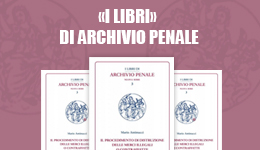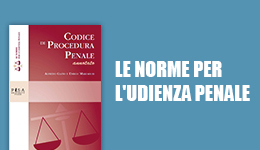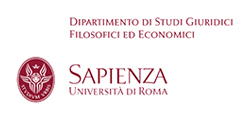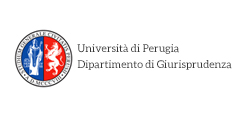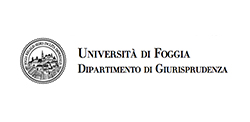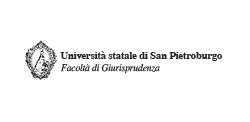La locuzione responsabilità penale esprime la situazione del soggetto chiamato a rispondere della viola-zione di una norma penalmente sanzionata. Senonché, proprio perché, nel significato, l’espressione racchiude un giudizio di relazione, il problema nasce nel momento in cui ci si domanda a chi si accolla il fatto e come e perché si attua il processo di attribuzione al soggetto. L’impegno, perciò, è su due fron-ti: la ricerca dei principi che regolano il sistema – da un lato – e lo studio delle interrelazioni esistenti con gli elementi che intervengono nel giudizio di responsabilità (la teoria del fatto tipico e i contenuti dei suoi fondamenti) – dall’altro –. Sul piano della scienza giuridica, la conferma del nesso e la necessità di un approccio contemporaneo al dato sostanziale e agli aspetti processuali dell'argomento sono testimo-niate dalla particolare attenzione rivolta dalla dottrina selezionata alla praticabilità della cultura del Tat-bestand rispetto alle esigenze concrete dell'accertamento, oltre che ai rapporti con la struttura e il tipo di processo, nonché al bisogno di utilizzare la verifica processuale come strumento di individuazione del limite fino al quale può essere spinta la tendenza alla personalizzazione della responsabilità penale. Sul fronte generale del sistema di legalità, invece, la relazione tra legislazione e giurisdizione – quali momenti di esistenza del sistema penale – è reciproco controllo, siccome la prima, ponendo la fattispecie, delimita l'ambito di intervento del giudice, e la seconda, raccordando fatto e fattispecie, valuta, simultaneamente, la legittima appartenenza di questa al mondo fenomenico e al diritto valido. Dunque, la necessaria di-stinzione tra i problemi interni alla struttura del Tatbestand – relativi, cioè, alla configurazione e alla forma del reato – e quelli inerenti alla corrispondenza tra autore e soggetto chiamato a subirne le conse-guenze trovano un punto di sintesi nella circostanza che i profili legali della fattispecie costituiscono il presupposto per la ricostruzione del giudizio di responsabilità e per la conseguente inflizione della sanzione. Di qui, la necessità di rivolgere l'attenzione agli elementi sostanziali che vi intervengono, non-ché ai connotati essenziali del regime giuridico della responsabilità penale. Invero, lo spaccato formale della fattispecie e i tratti sostanziali del fatto, costituendo la fonte della responsabilità, svelano il contenu-to del cognitivismo processuale. Tale ricostruzione – contestualizzata – rappresenta un punto di osser-vazione privilegiato per verificare prospettive ulteriori della specialità sostanziale del sistema della re-sponsabilità delle persone giuridiche in termini coerenti alle linee di un diritto penale fondato sul prin-cipio personalistico dettato nell’art. 27, co. 1 Cost.; e per confutare potenzialità innovatrici della specialità processuale sul fronte della volontà dell’ente-imputato nella definizione di forme alternative al modello ordinario di processo. Specificamente, consente di dissentire dall’idea di certa giurisprudenza per la quale, de iure condito, l’ente può disporre della probation disciplinata dagli artt. 168 bis c.p. e 464 bis-464 octies c.p.p., giusto il ricorso all’analogia in bonam partem, consentito dalla forza espansiva dell’art. 34 d. lgs. Dal punto di vista espositivo, infine, onde evitare che la presentazione di un così ampio spettro di indagine collida con le esigenze proprie della ricerca, ci si avvale di un modello che, raccogliendo le linee di tendenza relative ai singoli argomenti, coniuga la proiezione esemplificativa con indispensabili occasioni speculative dei risultati di volta in volta raggiunti. Reasoning about administrative criminal liabi-lity of collective entities and Tatbestand, in the prism of a teleological penal system and a guaranteed process. Crime liability of entities and Tatbestand. On the exclusion of the legal person from probation. The expression criminal liability expresses the situation of the subject called to answer for the violation of a criminally sanctioned norm. However, precisely because, in its meaning, the expression contains a relational judgment, the problem arises when we ask ourselves who is responsible for the fact and how and why the process of attribution to the subject is implemented. The commitment, therefore, is on two fronts: the search for the principles that regulate the system - on the one hand - and the study of the interrelations existing with the elements that intervene in the judgment of responsibility (the theory of the typical fact and the contents of its foundations) - on the other -. On the level of legal science, the con-firmation of the connection and the need for a contemporary approach to the substantial data and the procedural aspects of the subject are demonstrated by the particular attention paid by the selected doc-trine to the practicability of the culture of Tatbestand with respect to the concrete needs of the assess-ment, as well as to the relationships with the structure and type of process, as well as to the need to use the procedural verification as a tool for identifying the limit to which the tendency to personalize crimi-nal liability can be pushed. On the general front of the legality system, however, the relationship be-tween legislation and jurisdiction - as moments of existence of the criminal system - is mutual control, since the first, by establishing the factual situation, delimits the scope of intervention of the judge, and the second, by connecting fact and factual situation, simultaneously evaluates the legitimate belonging of this to the phenomenal world and to valid law. Therefore, the necessary distinction between the problems internal to the structure of the Tatbestand – that is, relating to the configuration and form of the crime – and those inherent to the correspondence between the perpetrator and the subject called to suffer the consequences find a point of synthesis in the circumstance that the legal profiles of the case constitute the basis for the reconstruction of the judgment of responsibility and for the consequent infliction of the sanction. Hence, the need to focus attention on the substantial elements involved, as well as on the essential features of the legal regime of criminal liability. Indeed, the formal breakdown of the case and the substantial features of the fact, constituting the source of liability, reveal the content of procedural cognitivism. This reconstruction – contextualized – represents a privileged observation point to verify further perspectives of the substantial specialty of the system of liability of legal persons in terms consistent with the lines of a criminal law based on the personalistic principle dictated in art. 27, co. 1°, Const.; and to refute the innovative potential of procedural specialty on the front of the will of the enti-ty-defendant in the definition of alternative forms to the ordinary trial model. Specifically, it allows us to disagree with the idea of certain jurisprudence according to which, de iure condito, the entity can dis-pose of the probation regulated by art. 168 bis c.p. and 464 bis-464 octies c.p.p., just the recourse to analogy in bonam partem, permitted by the expansive force of art. 34 d. lgs. From the expository point of view, finally, in order to avoid that the presentation of such a broad spectrum of investigation collides with the specific needs of the research, a model is used that, collecting the trends relating to the individ-ual topics, combines the exemplary projection with indispensable speculative opportunities of the re-sults achieved from time to time.


